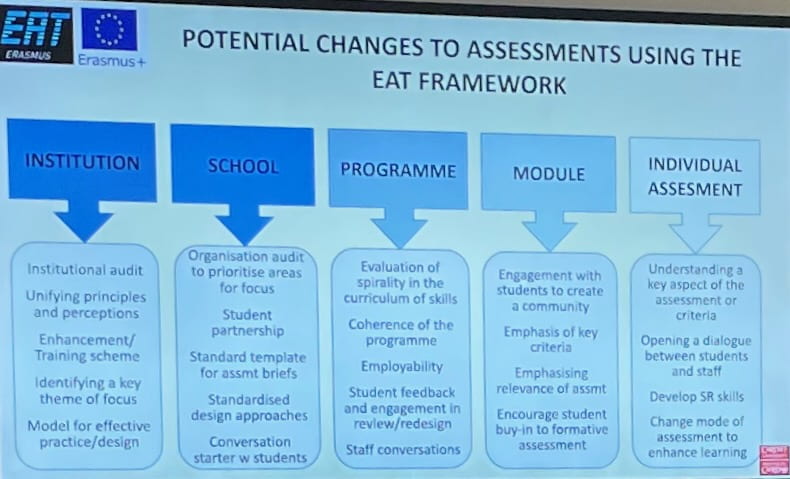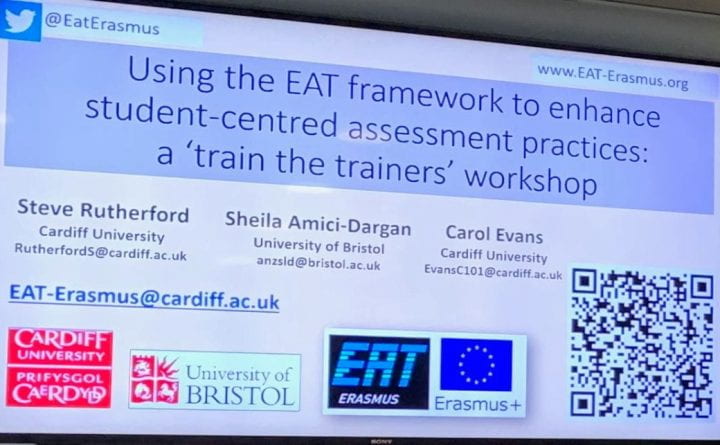Last week I attended a ‘train the trainers’ workshop at Cardiff University. The workshop introduced the EAT Framework, suggesting and modelling ways of using the framework to support ‘rethinking’ in assessment and feedback.
The EAT project is all about enhancing Equity, Agency and Transparency in Assessment Practices in HE. The framework is the result of a three year (2020-23) EU Erasmus project with a number of European partner universities including Cardiff and Bristol in the UK, to support educators in developing and implementing high quality, innovative assessment practices with a research-informed participatory assessment framework (EAT; Evans, 2016).
Professor Steve Rutherford, Cardiff University led the session along with Dr Sheila Amici-Dargan, University of Bristol.

The EAT framework focuses on 3 core dimensions: Assessment Literacy, Assessment Feedback, and Assessment Design and has developed resources to review and enhance each of these areas. These resource toolkits are easily adapted for use with different stakeholders such as students on a module or programme, or reviewing assessment practices across programmes, faculties or institution wide.

The EAT Wheels
Key to the EAT framework are a series EAT Wheels which are tailored to each of the 3 core dimensions and further sub-dimensions. The resources and toolkits can be used to review and enhance any one of these areas.
Below Dr Sheila Amici-Dargan is showing the lecturer version.

The wheels can be used to identify areas where enhancements can be made and where understandings differ. For example, in the student version of the wheel Assessment Literacy 1 (AL1) reads ‘What constitutes good: I have a good understanding of the assessment requirements and how to do well’. Whereas the lecturer’s version says ‘Clarify what constitutes good: Making the rationale underpinning assessment clear. Making assessment criteria accessible to all’. There are also other resources for each dimensions such as questionnaires, quality assurance checklists and cards to aid enhancements in each of the dimensions.
Here is an example of the student template.

Here is an example of both lecturer and student template inputs overlaid to identify differences.

Workshop activities
We undertook a number of activities in the workshop where we discussed some of the core concepts and the opportunities and barriers in our roles, whether institutional or personal. We used the EAT wheel to map out an assessment and explore how it addressed each of the 12 dimensions. Selecting both a high and low score aspect we discussed how the high score was achieved and how we could improve the low-scoring area by engaging students as active partners in redesign and understand their perspective. Here Sheila and Steve are introducing some activities.

The EAT project also plans an Assessment Specialist Award (ASA) with both individual and leadership pathways based on casework.
For full details of the EAT Project and links to the EAT resources please visit the EAT website.
